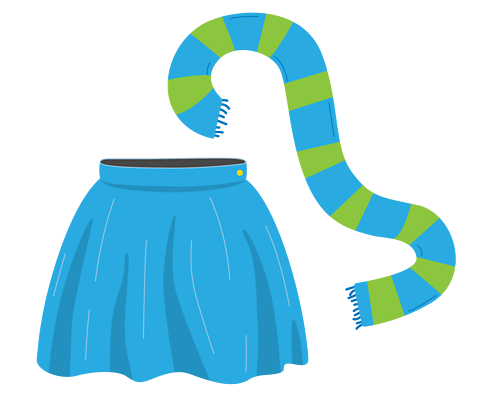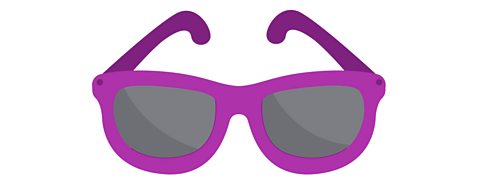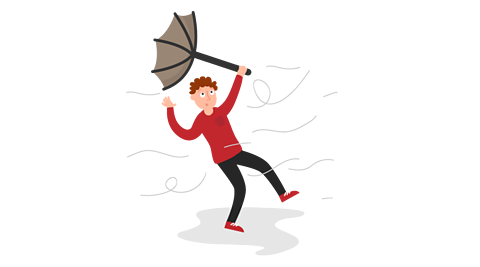Learn some useful French phrases to talk about what clothes you are wearing.
The 1-2-3 challenge
Join Scottish pupils as they give French a go!
Listen and guess what they are saying before trying yourself.
GIRL 1: Qu’est ce tu portes?
GIRL 2: Je porte une chemise blanche.
GIRL 3: Je porte une cravate jaune et noire.
GIRL 4: Je porte un manteau noir.
Tip: This video can be used as an interactive introduction to this topic or as a recap on key vocabulary and phrases already learnt.
Remember!
It doesn't matter if your pronunciation isn't perfect. Try your best and have fun!
How to say 'I am wearing' in French

If you want to talk about what you are wearing, a really useful verb is Sorry, something went wrongCheck your connection, refresh the page and try again. (to wear). If you want to say 'I am wearing' something, you say Sorry, something went wrongCheck your connection, refresh the page and try again..
You can then add a noun afterwards to explain what clothes you are wearing.
- Sorry, something went wrongCheck your connection, refresh the page and try again. – I am wearing a coat
- Sorry, something went wrongCheck your connection, refresh the page and try again. – I am wearing a jumper

Did you know?
The ending of the verb changes, depending on which person or thing is doing the action. For the verb porter, the ending for je (I), elle (she) and il (he) is e.
Notice that the verb ending used with tu (you) is es. Listen to the sound of the verbs below. They all sound the same except for Sorry, something went wrongCheck your connection, refresh the page and try again..
| French | English |
|---|---|
| Sorry, something went wrongCheck your connection, refresh the page and try again. | to wear |
| Sorry, something went wrongCheck your connection, refresh the page and try again. | I wear |
| Sorry, something went wrongCheck your connection, refresh the page and try again. | you wear |
| Sorry, something went wrongCheck your connection, refresh the page and try again. | she wears |
| Sorry, something went wrongCheck your connection, refresh the page and try again. | he wears |
Describing what others are wearing

If you want to say what someone else is wearing, you say:
- Sorry, something went wrongCheck your connection, refresh the page and try again. - She is wearing
- Sorry, something went wrongCheck your connection, refresh the page and try again. - She is wearing a skirt
- Sorry, something went wrongCheck your connection, refresh the page and try again. - He is wearing
- Sorry, something went wrongCheck your connection, refresh the page and try again. - He is wearing a scarf
To ask what someone else is wearing, you say Sorry, something went wrongCheck your connection, refresh the page and try again. - What are you wearing?

Clothes in French
Have a look at the French vocabulary for clothes and see how much you can remember.
| French | English |
|---|---|
| Sorry, something went wrongCheck your connection, refresh the page and try again. | a cap |
| Sorry, something went wrongCheck your connection, refresh the page and try again. | a shirt |
| Sorry, something went wrongCheck your connection, refresh the page and try again. | a scarf |
| Sorry, something went wrongCheck your connection, refresh the page and try again. | a skirt |
| Sorry, something went wrongCheck your connection, refresh the page and try again. | a coat |
| Sorry, something went wrongCheck your connection, refresh the page and try again. | a jumper |
| Sorry, something went wrongCheck your connection, refresh the page and try again. | a t-shirt |
Singular and plural nouns

Remember that to say 'a', you use Sorry, something went wrongCheck your connection, refresh the page and try again. for masculine singular nouns and Sorry, something went wrongCheck your connection, refresh the page and try again. for feminine singular nouns.
For plural nouns, you can say Sorry, something went wrongCheck your connection, refresh the page and try again. (some) in French. Remember, if the noun is plural, it will often end in s.
Here are some examples of plural nouns in French for clothes:
| French | English |
|---|---|
| Sorry, something went wrongCheck your connection, refresh the page and try again. | some trainers |
| Sorry, something went wrongCheck your connection, refresh the page and try again. | some boots |
| Sorry, something went wrongCheck your connection, refresh the page and try again. | some socks |
| Sorry, something went wrongCheck your connection, refresh the page and try again. | some shoes |
| Sorry, something went wrongCheck your connection, refresh the page and try again. | some gloves |
| Sorry, something went wrongCheck your connection, refresh the page and try again. | some sunglasses |

Did you know?
In French, 'trousers' are singular - Sorry, something went wrongCheck your connection, refresh the page and try again..
Here are some other items of clothing that are plural in English but singular in French:
| French | English |
|---|---|
| Sorry, something went wrongCheck your connection, refresh the page and try again. | some shorts |
| Sorry, something went wrongCheck your connection, refresh the page and try again. | some pyjamas |
| Sorry, something went wrongCheck your connection, refresh the page and try again. | some swimming trunks |


Did you know?
The verb you use to say 'to wear' Sorry, something went wrongCheck your connection, refresh the page and try again. also means 'to carry'.
So you can say:
Sorry, something went wrongCheck your connection, refresh the page and try again. - I wear a jumper
Sorry, something went wrongCheck your connection, refresh the page and try again. - I carry an umbrella
Clothes and classroom routines
You can use clothes with different verbs as part of your classroom daily routines. Some common instructions are below:
Sorry, something went wrongCheck your connection, refresh the page and try again. - put on - instruction for a group of pupils
Sorry, something went wrongCheck your connection, refresh the page and try again. - put on - instruction for one pupil
Sorry, something went wrongCheck your connection, refresh the page and try again. - hang up - instruction for a group of pupils
Sorry, something went wrongCheck your connection, refresh the page and try again. - hang up - instruction for one pupil
Sorry, something went wrongCheck your connection, refresh the page and try again. - change - instruction for a group of pupils
Sorry, something went wrongCheck your connection, refresh the page and try again. - change - instruction for one pupil
When saying 'your' in French for classroom instructions, use:
- Sorry, something went wrongCheck your connection, refresh the page and try again. when speaking to one pupil.
eg:
Sorry, something went wrongCheck your connection, refresh the page and try again. - your t-shirt
Sorry, something went wrongCheck your connection, refresh the page and try again. - Change your t-shirt
- Sorry, something went wrongCheck your connection, refresh the page and try again. when speaking to one pupil.
eg:
Sorry, something went wrongCheck your connection, refresh the page and try again. - your jacket
Sorry, something went wrongCheck your connection, refresh the page and try again. - Put on your jacket
- Sorry, something went wrongCheck your connection, refresh the page and try again.- when speaking to a group (such as the whole class)
eg:
Sorry, something went wrongCheck your connection, refresh the page and try again. - your shoes
Sorry, something went wrongCheck your connection, refresh the page and try again. - Change your shoes please!
Here are some examples:
Sorry, something went wrongCheck your connection, refresh the page and try again. - Put on your shoes please!
Sorry, something went wrongCheck your connection, refresh the page and try again. - Hang up your coats please!
Sorry, something went wrongCheck your connection, refresh the page and try again. - Change your shoes please!
Sorry, something went wrongCheck your connection, refresh the page and try again. - Put on your jumper please!
Key French sounds
Below are some important French sounds that you have heard in this topic. Try practising them yourself out loud.
- ch
In French, the letters ch make the same sound as the letters sh do in English.
- Sorry, something went wrongCheck your connection, refresh the page and try again. – some shoes
How many other French words in this article can you spot that contain this sound?
- om, on
In French, the letters on and om make a nasal sound. Put your mouth in the position to say o as in orange, then allow the air to come down your nose. This is a nasal sound.
- Sorry, something went wrongCheck your connection, refresh the page and try again. – trousers
- q and qu
The word for 'cap' is casquette. The sound for the letters qu in the middle of this word make the same sound as c or k in English.
- Sorry, something went wrongCheck your connection, refresh the page and try again. – a cap
Remember that the e on the end of the word is silent.
More on Talking topics
Find out more by working through a topic
- count12 of 12

- count1 of 12

- count2 of 12

- count3 of 12
